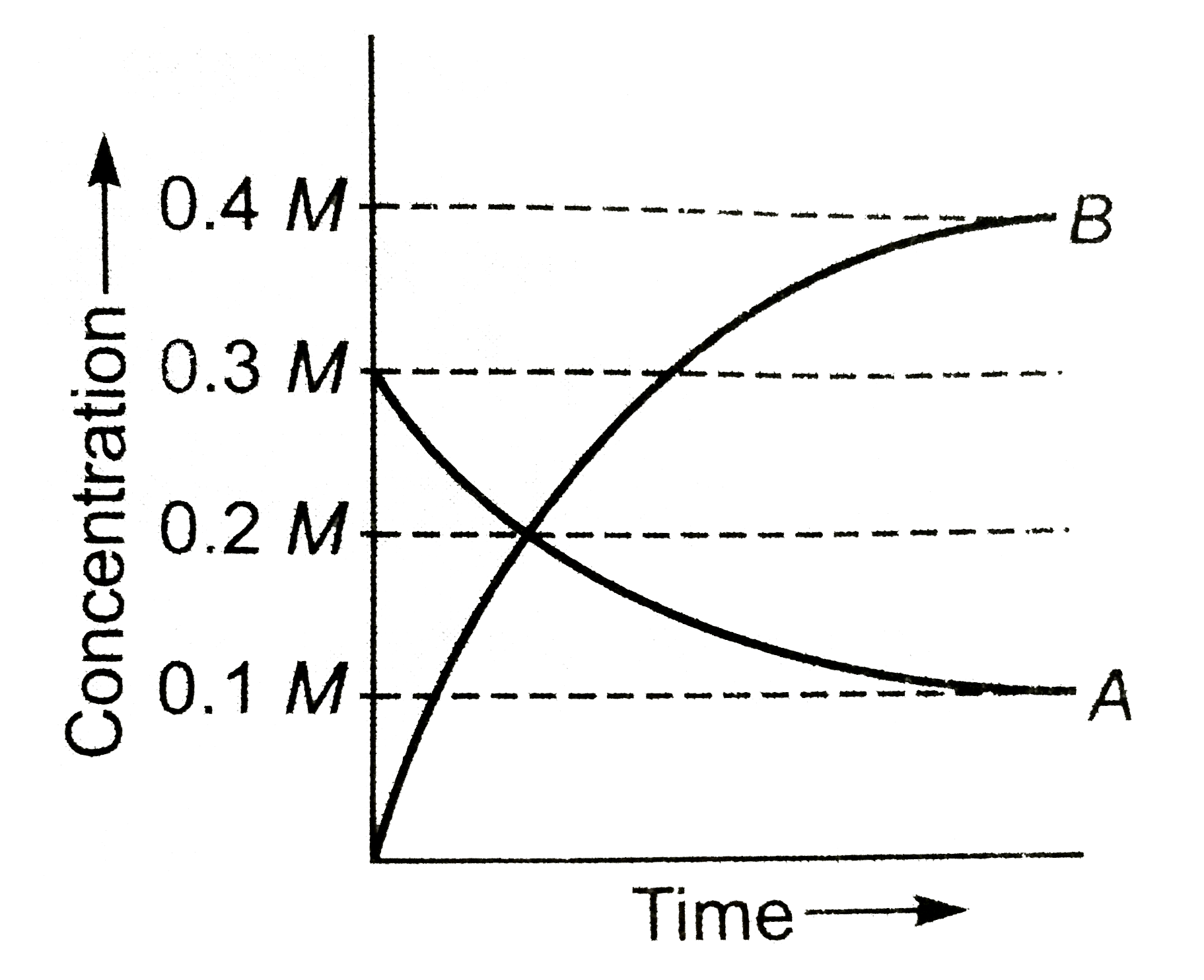The figure shows the change in concentration of species A and B as a function of time.
The equilibrium constant Kcfor the reactionA(g)⇔2B(g) is :
 Solution in Telugu
Solution in Telugu
Kc>1
K<1
K=1
data insufficient
The correct Answer is:a
Step by step video & image solution for The figure shows the change in concentration of species A and B as a function of time. The equilibrium constant K_(c)for the reaction A(g)hArr2B(g) is : by Chemistry experts to help you in doubts & scoring excellent marks in Class 11 exams.
Updated on:21/07/2023Topper's Solved these Questions
- CHEMICAL EQUILIBRIUMBOOK - NARENDRA AWASTHICHAPTER - CHEMICAL EQUILIBRIUMEXERCISE - Level 1 (Q.93 To Q.122)
1 Videos
- CHEMICAL EQUILIBRIUMBOOK - NARENDRA AWASTHICHAPTER - CHEMICAL EQUILIBRIUMEXERCISE - Level 2
1 Videos
- ATOMIC STUCTUREBOOK - NARENDRA AWASTHICHAPTER - ATOMIC STUCTUREEXERCISE - level 2
1 Videos
- DILUTE SOLUTIONBOOK - NARENDRA AWASTHICHAPTER - DILUTE SOLUTIONEXERCISE - Level 3 - Match The Column
1 Videos
Similar Questions
An equilibrium mixture at 700 K of 0.05M N2(g)and0.2MNH3(g) is present in a container .Now if this equilibrium is disturbed by adding N∘ (g) so that its concentration becomes 0.15M just after addition then which of the following graph represents the above situation more appropriately:
View SolutionCalculate ΔrG for the reaction at 27∘C
H2(g)+2Ag+(aq)⇔2Ag(s)+2H+(aq)
Given : PH2=0.5 bar, [Ag+]=10−5M,
[H+]=10−3M,ΔrG∘[Ag+(aq)]=77.1kJ/mol
View SolutionA small particle of mass m moves in such a way that the potential energy U = ar2 where a is a constant and r is the distance of the particle from the origin. Assuming Bohr's model of quantization of angular momentum and circular orbits, find the radius of nth allowed orbit.
View SolutionColumn -I and Column -II contain four entries each. Entries of column-I are to be matched with some entries of column-II. One or more than one entries of column-I may have the matching with the same entries of column-II.

View SolutionFor the reaction H_(2)(g)+I_(2)(g) hArr 2HI(g) The equilibrium constant K_(p) changes with
View SolutionFor a reaction A_((g)) + B_((g))hArrC_((g)) + D_((g)) the intial concentration of A and B are equals but the equilibrium constant of C is twice that of equilibrium concentration of A. Then K is
View SolutionThe following equilibrium exists in a closed vessel in 1L capacity A(g)+3B(g)hArr4C(g) initial cocentration of A(g) is equal to that B(g) . The equilibrium concentration of A(g) and C(g) are equal. K_(c) for the reaction is
View SolutionFor the reaction H_(2)(g)+I_(2)(g)hArr2HI(g) the equilibrium constant K_(p) changes with
View SolutionThe figure shows the change in concentration of species A and B as a function of time. The equilibrium constant K_(c) for the reaction A(g)hArr2B(g) is :
View SolutionConsider the general hypothetical reaction
A(s)⇔2B(g)+3C(g)
If the concentration of C at equlibrium is doubled then after the equlibrium is re-established the concentration of B will be
View SolutionIn the equilibrium reaction, A(g) + 2B(g) + (g), the equilibrium constant, Kc is given by the expression
View SolutionFor the reaction, A(g)+2B(g)⇔2C(g) one mole of A and 1.5 mol of B are taken in a 2.0 L vessel. At equilibrium, the concentration of C was found to be 0.35 M. The equilibrium constant (Kc) of the reaction would be
View SolutionThe equilibrium constant K_(p) for the reaction H_(2)(g)+I_(2)(g) hArr 2HI(g) changes if:
View SolutionThe figure shows the change in concentration of species A and B as a function of time.
The equilibrium constant Kcfor the reactionA(g)⇔2B(g) is :

View SolutionFor the reaction H_(2)(g)+I_(2)(g)hArr2HI(g) the equilibrium constant K_(p) changes with
View Solutionकाल्पनिक अभिक्रिया पर विचार करो
A(s)⇔2B(g)+3C(g)
यदि C की सान्द्रता साम्य पर दुगनी कर दी जाये तब साम्य स्थापित होने पर B की सान्द्रता होगी
View Solution
